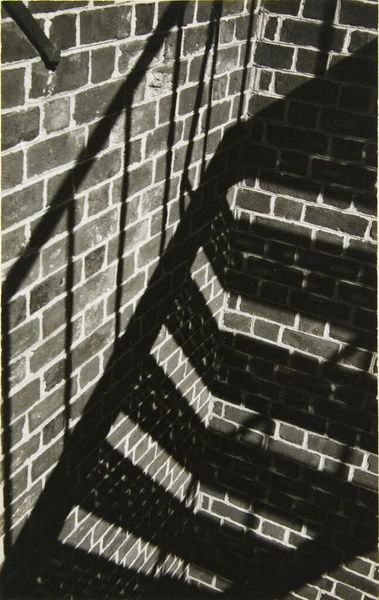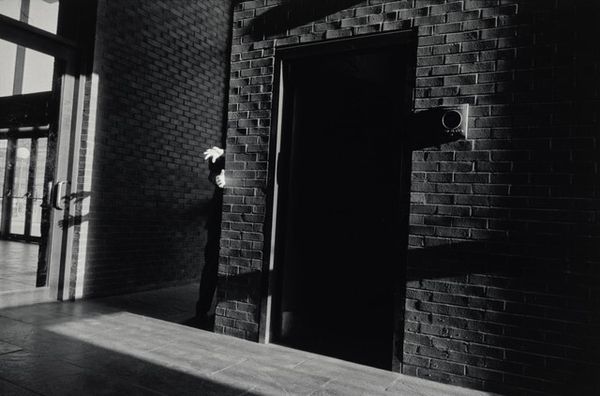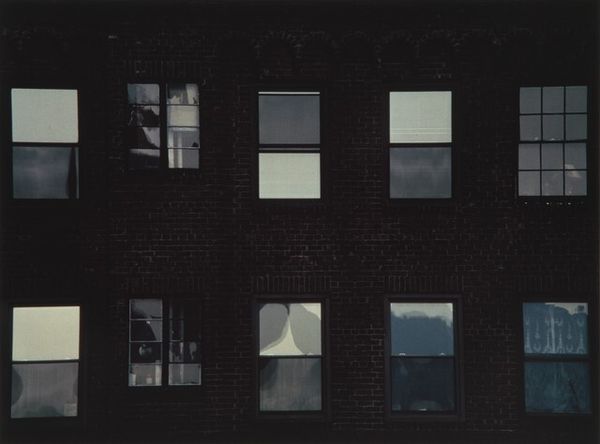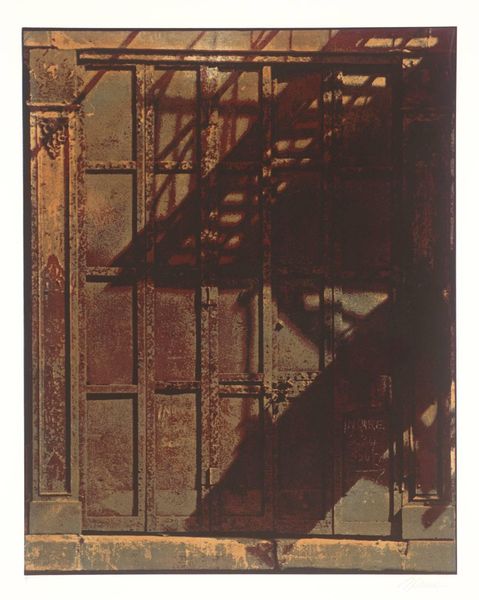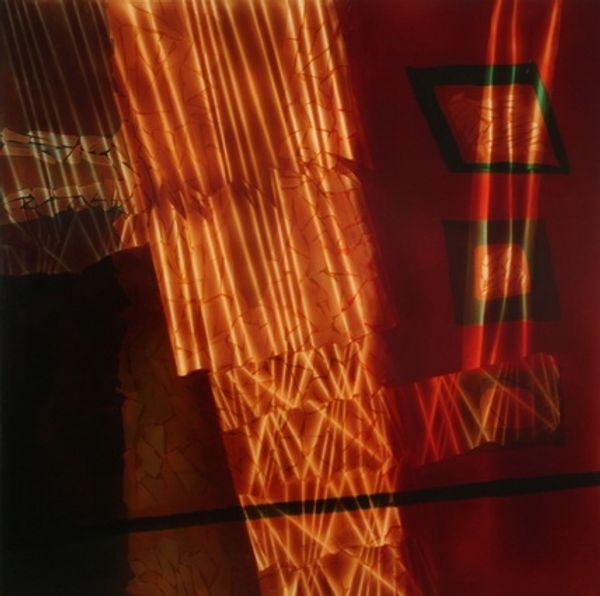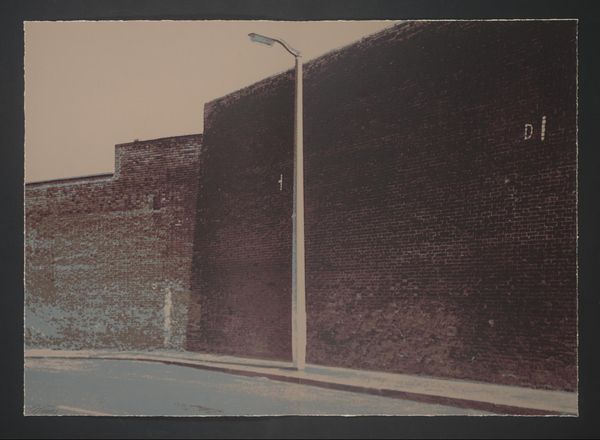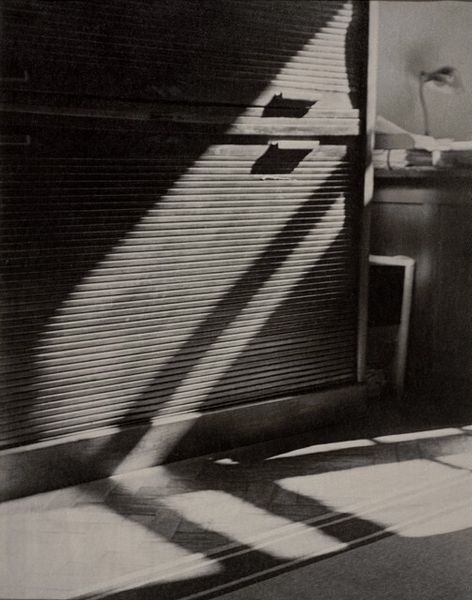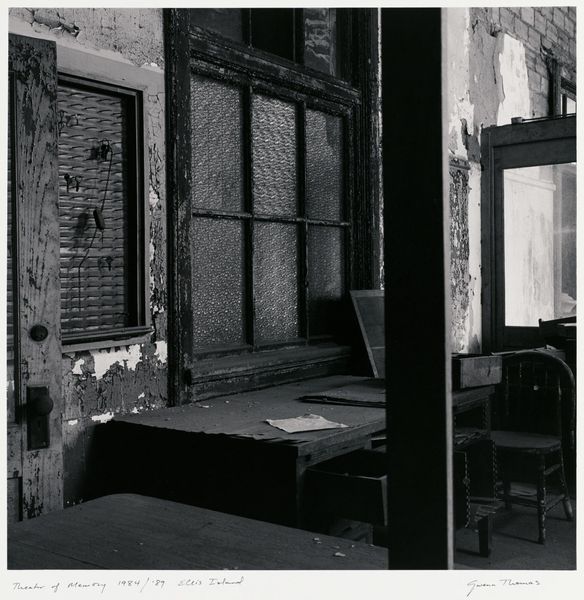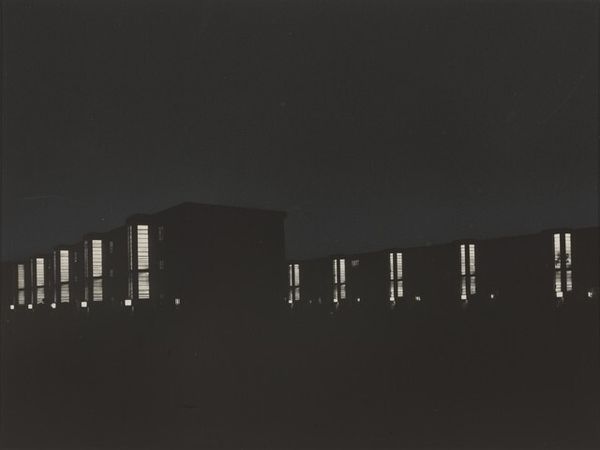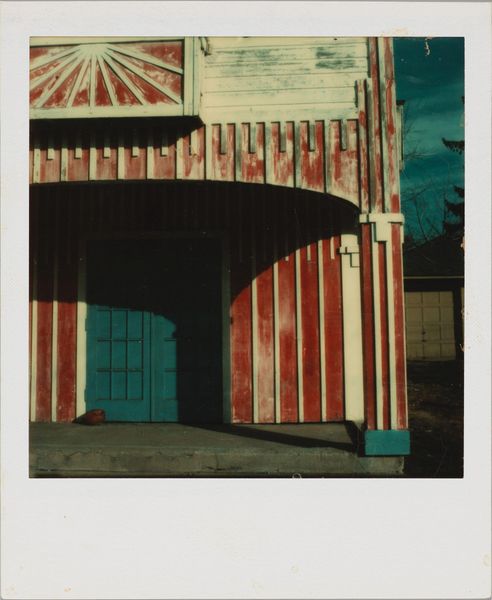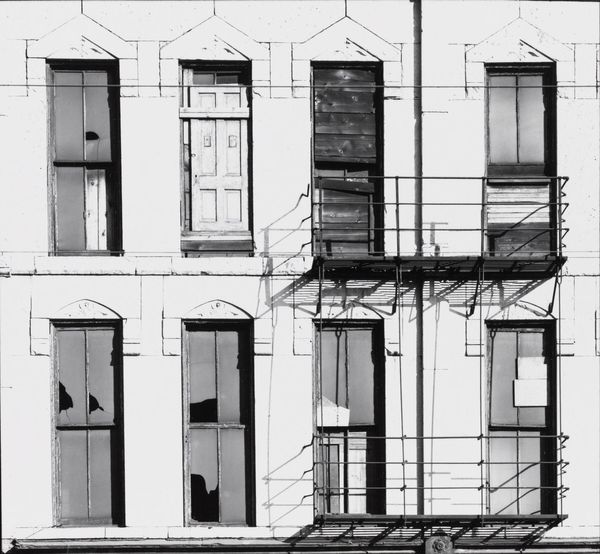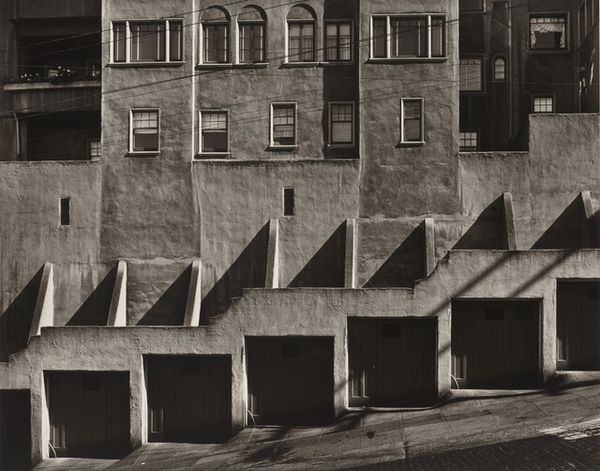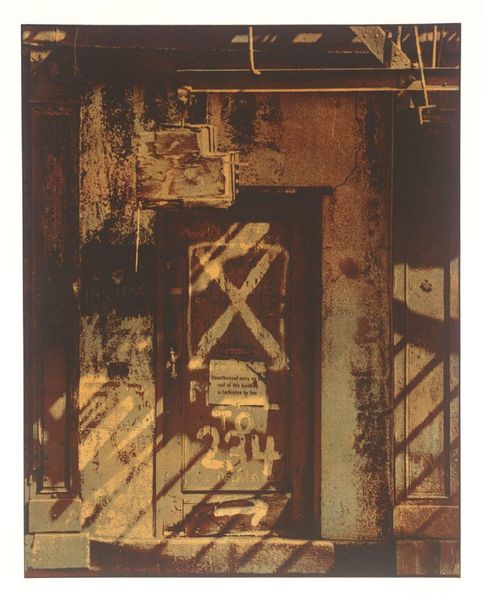
c-print, photography
#
public art
#
urban landscape
#
street art
#
c-print
#
urban cityscape
#
street-photography
#
photography
#
urban photography
#
modernism
Dimensions: overall (image): 24.3 x 36.7 cm (9 9/16 x 14 7/16 in.) sheet: 35.56 x 44.13 cm (14 x 17 3/8 in.) mat: 40.64 x 50.8 cm (16 x 20 in.)
Copyright: National Gallery of Art: CC0 1.0
Curator: Harry Callahan's 1981 c-print, "Kansas City," strikes me immediately with its potent monochromatic presence. The color is overwhelmingly impactful. Editor: Yes, this intense earthy pigment really commands the eye. What is this evocative red telling us? It almost feels scorched, apocalyptic even. Curator: Callahan often worked with vernacular subjects – here the side of a nondescript urban building – elevated through his precise compositions and attention to form. It seems as though we are supposed to see these un-monumental spaces in a different light. The material palette is limited to brick and… what is that painted over? Editor: It's definitely paint, layering itself thick over possibly stucco, possibly old advertisements on the brick underneath. Callahan isn't simply showing us a building but an accretion of labor, of decisions made through the city's history and the building itself, each owner likely redoing, and repainting. Curator: And that repetitive gridded facade. It suggests confinement, but also hints at some other message beyond decay. Grids often serve as a framework – for understanding or control. Editor: Control definitely plays a role, looking at that large garage door partially blocked. What goods used to pass through that place? Is the intense pigmentation there to control our mood as viewers, too? Or control the mood in the area? I’d like to see historical photographs and documentation of similar facades, across decades and regions. That is my biggest curiosity while looking at it. Curator: Consider how Callahan consistently returned to certain motifs throughout his career: nature, the nude, his wife Eleanor, and architecture. This image folds the natural into the manufactured world; you have the thin spindly branches of the sapling trees and these bold shadows set against human construction. Editor: Perhaps he saw these trees, almost lost within the building shadows, as analogous to the working-class—obscured yet necessary. What’s left of this kind of place, these kinds of professions, now? I find the picture to have deep economic questions at its core, brought out by its construction. Curator: I agree. Thinking about how architecture is used as symbolic messaging interests me most. "Kansas City," shows us how a place becomes more than its bare materiality. Editor: And thinking about Callahan as someone interested in what persists, and how the economic structures shape, influence, and weigh on all who occupy that place, makes this one stick.
Comments
No comments
Be the first to comment and join the conversation on the ultimate creative platform.
